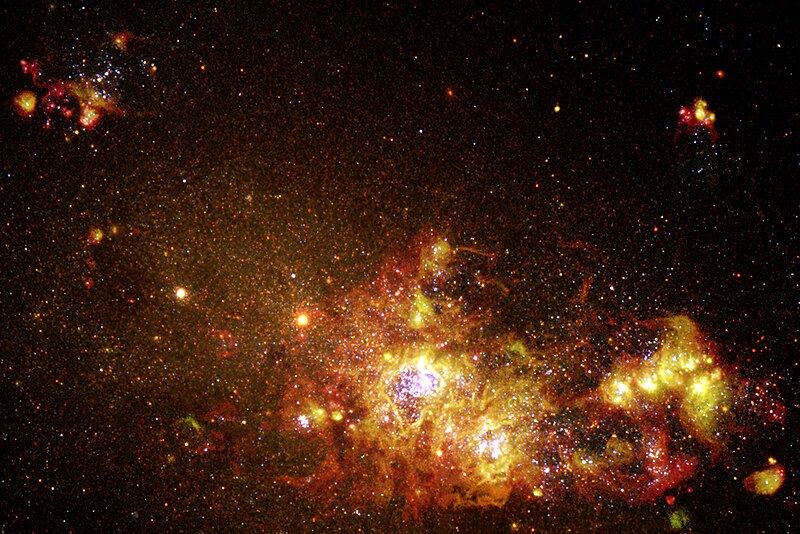Податотека:Fireworks of Star Formation Light Up a Galaxy - GPN-2000-000877.jpg

Големина на овој преглед: 800 × 534 пиксели. Други разделности: 320 × 214 пиксели | 640 × 427 пиксели | 1.024 × 683 пиксели | 1.280 × 854 пиксели | 1.596 × 1.065 пиксели.
Изворна податотека (1.596 × 1.065 пиксели, големина: 1,67 МБ, MIME-тип: image/jpeg)
Историја на податотеката
Стиснете на датум/време за да ја видите податотеката како изгледала тогаш.
| Датум/време | Минијатура | Димензии | Корисник | Коментар | |
|---|---|---|---|---|---|
| тековна | 02:41, 9 април 2009 |  | 1.596 × 1.065 (1,67 МБ) | BotMultichillT | {{Information |Description={{en|1=Located some 13 million light-years from Earth, NGC 4214 is currently forming clusters of new stars from its interstellar gas and dust. In this Hubble image, we can see a sequence of steps in the formation and evolution o |
Употреба на податотеката
Податотекава се користи во следнава страница:
Глобална употреба на податотеката
Оваа податотека ја користат и следниве викија:
- Употреба на af.wikipedia.org
- Употреба на ar.wikipedia.org
- Употреба на ast.wikipedia.org
- Употреба на el.wikipedia.org
- Употреба на en.wikipedia.org
- Употреба на es.wikipedia.org
- Употреба на eu.wikipedia.org
- Употреба на fr.wikipedia.org
- Употреба на hr.wikipedia.org
- Употреба на id.wikipedia.org
- Употреба на it.wikipedia.org
- Употреба на ja.wikipedia.org
- Употреба на ko.wikipedia.org
- Употреба на lb.wikipedia.org
- Употреба на nl.wikipedia.org
- Употреба на no.wikipedia.org
- Употреба на pl.wikipedia.org
- Употреба на pt.wikipedia.org
- Употреба на ro.wikipedia.org
- Употреба на si.wikipedia.org
- Употреба на sk.wikipedia.org
- Употреба на sr.wikipedia.org
- Употреба на tr.wikipedia.org
- Употреба на uk.wikipedia.org
- Употреба на vi.wikipedia.org

